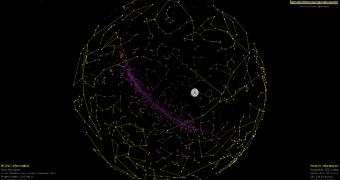Without modern technology, none of the discoveries mankind has made related to the outer space would have been possible, and the same goes for the identification of the PSR J1952+2630 pulsar, done with the help of NVIDIA's technology.
The discovery is quite an exciting one, not only due to its scientific value, but also due to the fact that it proved the efficiency in exploring the outer space of the Einstein@Home program, a worldwide “volunteer distributed-computing” project powered that leverages the spare computing power donated by hundreds of thousands of PC users all over the world to search data from gravitational wave detectors and radio telescopes.
In this way, by using the grid, scientists are able to analyze the constant stream of data they receive at much faster rates, thus enabling the achievement of some pretty exciting discoveries, just like that of the pulsar.
What's really interesting to mention is that the newly released version of its software leverages NVIDIA CUDA-enabled GPUs to get a 20X boost in performance, thus actually reducing the amout of CPU powered required.
In fact, the project is quite impressive, because, ever since its launch, back in 2005, it's been accessed by over two million machines, with around 100,000 systems contacting the servers each week (in fact, its creators claim that, based on its overall computing power, it could easily make it to the world's top 20 supercomputers' list).
The PSR J1952+2630 pulsar, that's actually quite far away from Earth (around 30,000 light years, luckily) has a 15-kilometer diameter and orbits a star that's got roughly the same weight as our own Sun.
The discovery pertains to an unnamed computing enthusiast in the U.K., who's most likely stoked about the decision of joining the aforementioned program, and whose success might actually inspire a whole lot more people to join in.

 14 DAY TRIAL //
14 DAY TRIAL //